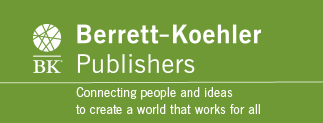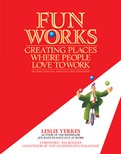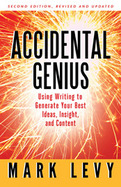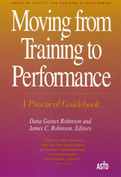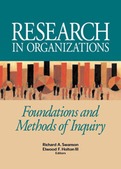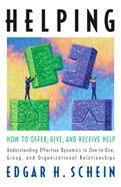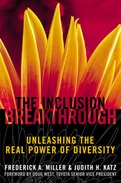2007
- Proves that organizations can use fun to increase employee and customer retention, motivate individuals and teams, and improve overall productivity
- Completely revised and updated to show how the companies profiled in the first edition have continued to thrive by combining fun and work
- From the coauthor of the bestselling book on fun in the workplace, 301 Ways to Have Fun at Work (75,000 copies sold)
2010
In response to today's rapidly changing business climate, traditional human resource and training departments are undergoing dramatic structural changes in several areas. One of these is a transition away from focusing on what employees need to learn, to a focus on improving people's performance to meet key organizational needs.
In this new book, Moving from Training to Performance, editors Dana Gaines Robinson and James C. Robinson point out how human resource departments are changing direction by partnering with management and linking initiatives to the business needs of the organization. "Clearly there has never been a greater opportunity for training departments to transform themselves into departments which partner with client-managers for the purpose of achieving exceptional performance and business results," say the editors. But what is required to successfully make the transition?
Organized around the three levels of alignment-the process level, the organization level, and the job/performer level-Moving from Training to Performance offers practical, action-oriented techniques for making the transition from some of the most highly respected contributors in the field. Chapters by such industry experts as Geoff Bellman, Geary Rummler, Paul Elliott, Jim Fuller, Harold Stolovitch, and Erica Keeps are paired with real-life case studies of organizations such as Johnson & Johnson, Andersen Consulting, Prudential HealthCare System, Steelcase, PNC Bank, and others that have achieved exceptional results by successfully making the transition to performance at each level of alignment. The book also offers a special "Quick Read" summary of key points from each chapter, a complete glossary of terms, and a comprehensive resource directory of contacts in the field.
Whether your goal is to increase revenue or improve customer satisfaction, Moving from Training to Performance shows how today's performance improvement departments can take a more active role in helping organizations meet their service and financial goals.
- Edited by the authors of the bestselling Performance Consulting: Moving Beyond Training (over 30,000 copies sold)
- Co-published with the American Society for Training and Development
- Provides practical tools that show how human resource departments can make the transition to a performance improvement function.
- Features chapters by some of the most highly respected professionals in the field of training and performance
Designed for use by professors and students in graduate-level programs in business, management, organizational leadership, and human resource development, Research in Organizations teaches how to apply a range of methodolgies to the study of organizations. This comprehensive guide covers the theoretical foundations of various research methods, shows how to apply those methods in organizational settings, and examines the ethical conduct of research. It provides a holistic perspective, embracing quantitative, qualitative, and mixed-methodology approaches and illuminating them through numerous illustrative examples.
2009
By the bestselling author of Career Anchors (over 431,000 copies sold) and Organizational Culture and Leadership (over 153,000 sold)
A penetrating analysis of the psychological and social dynamics of helping relationships
Named one of the best leadership books of 2009 by strategy+business magazine
Helping is a fundamental human activity, but it can also be a frustrating one. All too often, to our bewilderment, our sincere offers of help are resented, resisted, or refusedand we often react the same way when people try to help us. Why is it so difficult to provide or accept help? How can we make the whole process easier?
Many different words are used for helping: assisting, aiding, advising, caregiving, coaching, consulting, counseling, guiding, mentoring, supporting, teaching, and many more. In this seminal book on the topic, corporate culture and organizational development guru Ed Schein analyzes the social and psychological dynamics common to all types of helping relationships, explains why help is often not helpful, and shows what any would-be helpers must do to ensure that their assistance is both welcomed and genuinely useful.
The moment of asking for and offering help is a delicate and complex one, fraught with inequities and ambiguities. Schein helps us navigate that moment so we avoid potential pitfalls, mitigate power imbalances, and establish a solid foundation of trust. He identifies three roles a helper can play, explaining which one is nearly always the best starting point if we are to provide truly effective help. So that readers can determine exactly what kind of help is needed, he describes an inquiry process that puts the helper and the client on an equal footing, encouraging the client to open up and engage and giving the helper much better information to work with. And he shows how these techniques can be applied to teamwork and to organizational leadership.
Illustrated with examples from many types of relationshipshusbands and wives, doctors and patients, consultants and clientsHelping is a concise, definitive analysis of what it takes to establish successful, mutually satisfying helping relationships.
